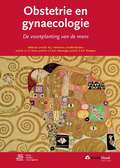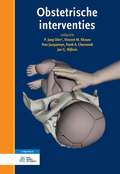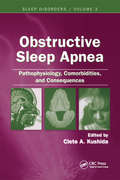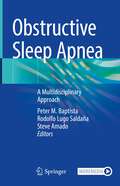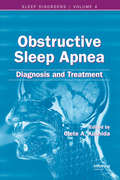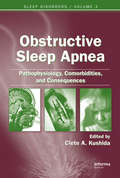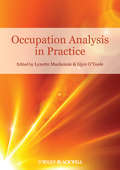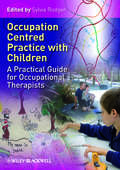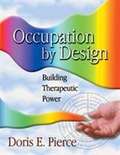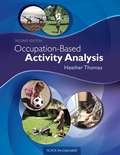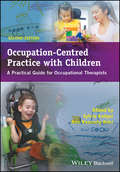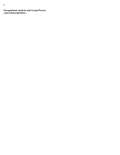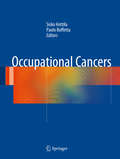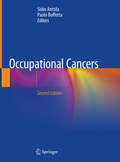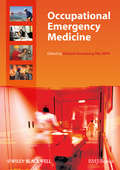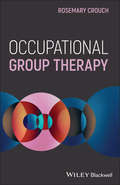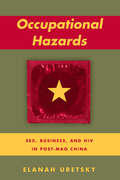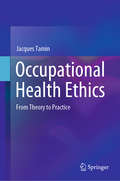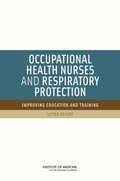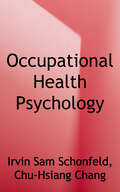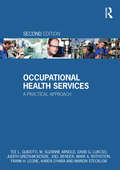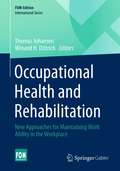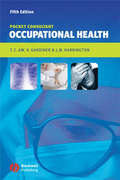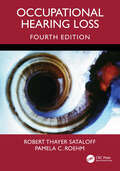- Table View
- List View
Obstetrie en gynaecologie: De voortplanting van de mens
by M. J. Heineman J.L.H. Evers L.F.A.G. Massuger E.A.P. SteegersHet leerboek Obstetrie en gynaecologie. De voortplanting van de mens is een modern standaardwerk. De didactische opbouw, heldere stijl en de hoogwaardige illustraties maken het tot een onovertroffen leerboek. Elk hoofdstuk begint met leerdoelen en definities en wordt afgesloten met een samenvatting en een blik op de toekomst. Historie, methodologische aspecten, epidemiologie en demografie hebben een eigen plaats in de tekst, die is onderverdeeld in leer- en leesstukken. In kaders worden samenvattingen aangeboden. Casussen brengen theorie en praktijk bij elkaar. De referenties omvatten zowel klassieke en recente literatuur als vele internetadressen. in deze nieuwe, zevende druk is niet alleen de informatie geactualiseerd, maar zijn ook enkele nieuwe hoofdstukken (De jonge zwangerschap en Pre-maligne aandoeningen) toegevoegd. Daarnaast zijn er prachtige nieuwe illustraties opgenomen die eerder werden gepubliceerd in het boek Obstetrische interventies. En dat is niet alles: er is ook een begin gemaakt met een aan dit leerboek gekoppelde elektronische leeromgeving waar aanvullende informatie gevonden kan worden. Kijk voor verdere verdieping op de website StudieCloud.Het leerboek Obstetrie en gynaecologie heeft een lange geschiedenis. In 1973 verscheen, onder leiding van prof. dr. G.J. Kloosterman, De voortplanting van de mens, het voornaamste leerboek voor obstetrie en gynaecologie van de jaren zeventig en tachtig van de vorige eeuw. Het boek kwam tot stand door een goede samenwerking tussen de Nederlandstalige universiteitsklinieken en was uniek omdat voor het eerst in één leerboek alle onderdelen van de obstetrie en gynaecologie een plaats kregen. In 1993 nam prof. dr. P.J. Treffers het hoofdredacteurschap over en beleefde het boek, waarvan de titel was gewijzigd in Obstetrie en gynaecologie, twee drukken. Vanaf de derde druk is de uitgave herzien onder leiding van prof. dr. M.J. Heineman samen met nieuwe en jonge auteurs, allen werkend in vooraanstaande opleidingsklinieken, aan het bestaande schrijverscollectief toegevoegd waarmee de actualiteit van het leerboek gegarandeerd wordt.Inmiddels werken ruim zeventig specialisten, vrijwel allen actief in de zorg, mee aan dit boek. Daarmee wordt een volledig beeld gekregen van de obstetrie, gynaecologie en voortplantingsgeneeskunde en beschikken wij opnieuw over een compleet en overzichtelijk standaard
Obstetrische interventies
by Joep P. Dörr Vincent M. Khouw Yves Jacquemyn Frank A. Chervenak Jan G. NijhuisIn dit leerboek worden op heldere en indringende wijze de anatomie van het geboortekanaal, de mechanismen van de normale baring en de uitvoering van obstetrische interventies, zoals kunstverlossingen en keizersneden in het ziekenhuis, weergegeven. Maar ook problemen die in de eerste lijn kunnen voorkomen, bijvoorbeeld schouderdystocie, worden uitvoerig behandeld. 'Obstetrische interventies' is bedoeld voor studenten verloskunde en geneeskunde, artsen (in opleiding), tropenartsen, (klinisch) verloskundigen en gynaecologen. Met de bijdragen van ruim dertig auteurs uit Nederland, Vlaanderen en de Verenigde Staten wordt in dit boek inzicht gegeven in de keuzes die artsen en verloskundigen vóór, tijdens en na bevallingen elke dag en nacht weer moeten maken. De keuzes zijn zo veel mogelijk evidence-based. Via StudieCloud is met een code het boek ook online beschikbaar en kunnen de tientallen animaties bekeken worden.
Obstructive Sleep Apnea (Sleep Disorders)
by Clete A. KushidaResponding to the growing recognition of Obstructive Sleep Apnea (OSA) as a major medical condition and the emergence of exciting new therapies, this 2 volume source examines clinical features, characteristics, comorbidities, and impact of OSA on patient biological systems. Not to mention, diagnosis and treatment methods that include first-line and
Obstructive Sleep Apnea: A Multidisciplinary Approach
by Peter M. Baptista Rodolfo Lugo Saldaña Steve AmadoThe book provides a comprehensive overview of the medical implications, pathophysiology, and treatment of Obstructive Sleep Apnea (OSA), a disease that creates increased health risks, most notably those related to the cardiovascular and cerebrovascular systems.The opening chapters are dedicated to the definition of OSA, its diagnosis, and the treatment options. The following chapters address primary forms of disease presentation in each medical field, with the latest evidence.Given its characteristics, the book will enable the reader to adopt a broad strategy for evaluating and managing OSA patients. In addition, it will be a valuable resource for all the clinicians who treat sleep-disordered breathing, including otolaryngologists, pulmonologists, cardiologists, neurologists, etc.
Obstructive Sleep Apnea: Diagnosis and Treatment (Sleep Disorders)
by Clete A. KushidaMore than 18 million Americans have Obstructive Sleep Apnea (OSA), but more than 90% of cases still remain undiagnosed. This source offers a thorough review of key considerations in the identification and treatment of OSA, and discusses issues often unaddressed in other publications on the topic, such as gender, age, drug interactions, and associat
Obstructive Sleep Apnea: Pathophysiology, Comorbidities, and Consequences (Sleep Disorders)
by Clete A. KushidaResponding to the growing recognition of Obstructive Sleep Apnea (OSA) as a major medical condition and the emergence of exciting new therapies, this source analyzes the clinical features, characteristics, comorbidities, and impact of OSA on patient biological systems and quality-of-life. Edited by the Director of the Center for Human Sleep Researc
Occupation Analysis in Practice
by Lynette Mackenzie Gjyn O'TooleOccupation Analysis in Practice is the essential book for all future and current occupational therapists. It offers a practical approach to the analysis of occupations in real world practice.The book frames occupation as the key component for analysis and builds upon previous work limited to analysis at the activity level. It examines the interests, goals, abilities and contexts of individuals, groups, institutions and communities, along with the demands of the occupation. It presents examples of occupation analysis in different practice context including working with children, health promotion, indigenous health, medico-legal practice; mental health and occupational rehabilitation.The book has four sections. Section 1 introduces theoretical perspectives of the concept of occupation analysis and how such analysis relates to particular models of Occupational Therapy practice and the generic World Health Organisation International Classification of Functioning, Disability and Health. Section 2 discusses analysis of particular components of occupation that support practice. These include culture, spirituality, home and community environments as well as self-care and leisure. Section 3 applies analysis of occupations to particular specialties encountered in practice. Section 4 considers the application of Occupation Analysis within professional reasoning and goal setting.FEATURESInternational team of contributorsExamples of occupation analysis proformaApplication to a wide range of practice areas.Glossary of key termsIncudes the International Classification of Functioning, Disability and Health.
Occupation Centred Practice with Children
by Sylvia RodgerThis book draws on contemporary occupational therapy theory and research to provide occupational therapy students and clinicians with a practical resource on implementing occupation centred practice with children.Each chapter has specific objectives and uses case studies to demonstrate the clinical realities and applications of each of the topics addressed. Best practice guidelines are provided along with a summary of recommendations drawn from the relevant theories, occupational therapy philosophy and existing research. The book aims specifically to be practice based.
Occupation by Design: Building Therapeutic Power
by Doris PierceBecoming a Designer of Therapeutically Powerful Occupations, Designing for Appeal: Productivity, Pleasure, and Restoration in Occupations, Designing for Intactness: The Spatial, Temporal, and Sociocultural Dimensions, Designing for Accuracy: Elements of the Occupational Design Process, Conclusion.
Occupation-Based Activity Analysis
by Heather ThomasOccupational therapists use occupations and activities as not just a goal, but also as a treatment medium, therefore, they must understand both the uniqueness of a client’s occupations and how an activity can be used therapeutically. To analyze the complexity of an occupation takes much more depth of understanding of the person engaging in it, his or her environment, and the uniqueness of the occupation a person has chosen. <p><p> The new Second Edition of Occupation-Based Activity Analysis continues the tradition of teaching students and clinicians the process of conducting activity analyses and occupation-based activity analyses. <p> Dr. Heather Thomas has updated Occupation-Based Activity Analysis, Second Edition to reflect the significant changes made to the activity analysis process and terminology in the Occupational Therapy Practice Framework, Third Edition. As in an activity analysis, occupation-based activity analysis looks at what is required for full participation, yet goes beyond analyzing the activity; it looks at what it means for the person engaging in it and how and where it is performed by that person. <p> Inside Occupation-Based Activity Analysis, Second Edition, each chapter is dedicated to a component of the activity analysis process and corresponding section of the Framework. Chapters have been restructured based on a greater emphasis on occupation-based activity analysis. From start to finish, readers are guided through identifying the occupation, sequence and timing, objects and properties, space and social demands, body functions, and structures and performance skills required.
Occupation-Centred Practice with Children: A Practical Guide for Occupational Therapists
by Sylvia Rodger Ann Kennedy-BehrOccupation-Centred Practice with Children remains the only occupational therapy book which supports the development and implementation of occupation-centred practice with children. Drawing on the latest occupational therapy theory and research, this new edition has been fully updated throughout, and includes new chapters on occupational transitions for children and young people, assessing children's occupations and participation, intervention within schools, the arts and children's occupational opportunities, as well as using animals to support children's occupational engagement. Key features: Written by an international expert team of contributors. Each chapter begins with preliminary questions to assist with consideration of current knowledge and ends with reflection questions to allow revision of key content to support independent learning. Highly practical, with a range of case studies, key point summaries, reflective questions, best-practice guidelines and a range of tools, interventions and techniques to aid applications to practice. A new appendix outlining all the assessments referred to in the book. Occupation-Centred Practice with Children is a practical, theoretically grounded and evidence-based guide to contemporary occupational therapy practice, and is important reading for all occupational therapy students and therapists wishing to make a real difference to children and their families' lives.
Occupational Analysis And Group Process
by Jane Clifford O'Brien Jean W. SolomonLearn how to analyze client needs and use group therapy for effective interventions! Occupational Analysis and Group Process, 2nd Edition provides practical information on two key components of occupational therapy practice, helping you understand how to intervene with a variety of clients. Using case scenarios and clinical examples, this book provides strategies and guidelines for analyzing functional tasks for clients from children to adolescents to adults. It guides you through every step of the group process, including group leadership, communication within the group, and group interventions. Written by noted OT educators Jane Clifford O’Brien and Jean W. Solomon, this book provides a solid foundation for intervention planning.
Occupational Cancers
by Paolo Boffetta Sisko AnttilaThis book is a comprehensive guide to occupational factors of malignant diseases. It discusses potentially work-related malignancies, in the context of exposure assessment, specific clinical and pathological features of occupational cancer and biomarkers of exposure and disease. Epidemiological data about risk ratios of the cancer in question are reviewed for various occupations and with exposure to specific carcinogens, carcinogenic mechanisms, host susceptibility factors (genetic and other) and other environmental and life-style risk factors. Aspects such as surveillance of workers exposed to carcinogens and strategies for prevention of occupational cancer are also discussed. Occupational Cancers is aimed at oncologists, pathologists, residents in training, clinical researchers, clinicians in occupational health, epidemiologists, pulmonologists, lawyers and public health officials.
Occupational Cancers: Clinical And Pathological Features, Assessment And Diagnosis (International Agency For Research On Cancer Scientific Publications #No.129)
by Paolo Boffetta Sisko AnttilaThis revised and updated new edition of a successful book is a multidisciplinary, comprehensive guide to occupational factors of malignant diseases.Building on the first edition, new research discoveries and their consequences in our understanding on carcinogenic mechanisms, diagnosis and attribution of occupational cancers are discussed. Examples of such discoveries are germline and acquired mutations of BAP1 in malignant mesothelioma, which have led to changes in diagnostic criteria, and carcinogen-specific genetic and epigenetic alterations in lung cancer. There are several new chapters, including gastrointestinal cancers, epidemiology of lung cancer, cancer of thyroid, and the role of primary health care in occupational cancer control.Occupational Cancers is aimed at experienced and trainee oncologists, pathologists, clinicians in occupational health, and pulmonologists, as well as epidemiologists, clinical researchers, lawyers and public health officials.
Occupational Emergency Medicine
by Michael GreenbergWith a large proportion of emergency admissions due to occupational health problems, the effect this can have on your practice cannot be ignored. Owing to the shortage of occupational physicians and limited worker access to health care, the diagnosis and treatment of occupational diseases rely increasingly on the emergency physician. Apart from extra paperwork, owing to the extra legal and administrative regulations, a lack of knowledge of occupational medicine can risk a missed diagnosis. This burden of work means occupational disorders impact the whole of the emergency department. Michael Greenberg addresses your questions and concerns about the management of these patients: from triage to discharge, and beyond for all work-place injuries or disorders, whether office-based, agricultural or industrial and their employment regulations Occupational Emergency Medicine is an essential reference for emergency physicians and trainees, featuring comprehensive information on legal issues involving the physician, and advice on managing occupational health admissions.
Occupational Group Therapy
by Rosemary CrouchOccupational Group Therapy helps group leaders achieve a higher and more dynamic level of therapeutic intervention, gain a better understanding of foundational concepts and research, and utilise active techniques that have meaningful and lasting effects on their clients. This practical guide encourages readers to use and develop their skills creatively in a range of interventions, including hospital-based work with acutely ill clients, physical acute care, and rehabilitation. The text presents both the theoretical background and practical applications of occupational group therapy: core skills and concepts, styles of group leadership, clinical and ethical reasoning, and different models of therapy such as the functional group model, the model of human occupation (MOHO), and the occupational therapy interactive group model (OTIGM), alongside warm-up and ice-breaker techniques, role-play exercises, assertiveness and social skills training strategies, guidance on using psychodrama and the therapeutic spiral model (TSM) in group settings, and more. Develops the skills and self-confidence occupational therapists need to be effective group leaders Covers the functional and performance aspects necessary for occupational therapy intervention, including client handling, and structuring and communication skills Discusses new ways of addressing common concerns and issues in various intervention settings Offers ideas and techniques for using higher-level interventions, such as psychodrama and the Therapeutic Spiral model Helps readers to design effective group experiences that allow their clients to “work on themselves” both inside and outside of the group Written by an esteemed expert with decades of practical experience in the field, with a chapter from Louise Fouché, an accomplished occupational group therapist and developer of OTIGM, and foreword by Professor Emerita Sharon Brintnell, former President of World Federation of Occupational Therapy (WFOT): Occupational Group Therapy is a must-have teaching manual and guide for undergraduate and post-graduate occupational therapy students, and for practitioners looking to increase their use of group work as a therapeutic intervention.
Occupational Hazards
by Elanah UretskyDoing business in China can be hazardous to your health. Occupational Hazards follows a group of Chinese businessmen and government officials as they conduct business in Beijing and western Yunnan Province, exposing webs of informal networks that help businessmen access political favors. These networks are built over liquor, cigarettes, food, and sex, turning risky behaviors into occupational hazards. Elanah Uretsky's ethnography follows these powerful men and their vulnerabilities to China's burgeoning epidemics of sexually transmitted infections (STIs) and HIV/AIDS. Examining the relationship between elite masculine networking practices and vulnerability to HIV infection, Occupational Hazards includes the stories of countless government officials and businessmen who regularly visit commercial sex workers but resist HIV testing for fear of threatening their economic and political status. Their fate is further complicated by a political system that cannot publicly acknowledge such risk and by authoritative international paradigms that limit the reach of public health interventions. Ultimately, Uretsky offers insights into how complex socio-cultural and politico-economic negotiations affect the development and administration of China's HIV epidemic.
Occupational Health Ethics: From Theory to Practice
by Jacques TaminThis book provides occupational health (OH) professionals with a theoretical basis for addressing the ethical issues that they confront in their practice. There is often a lack of in-depth moral analysis of the issues that OH practitioners face on a daily basis. The ICOH Code of Ethics sets out the important principles that guide OH practice. This book builds on these core principles, starting from an application of moral theories in the OH context and illustrating how ethical conflicts could be resolved, by carrying out ethical analyses of several case studies. In this way, it aims to link ethical theory to OH practice.
Occupational Health Nurses and Respiratory Protection: Letter Report
by Linda Hawes CleverOccupational health nurses (OHNs) are front-line advocates for preventing illness and injury and protecting health in a variety of workplace settings, including the areas of agriculture, construction, health care, manufacturing, and public safety. OHNs need education and training in respiratory protection in order to ensure both their safety and the safety of America's workers. At the request of the National Personal Protective Technology Laboratory of the National Institute for Occupational Safety and Health, the Institute of Medicine (IOM) examined existing respiratory protection curricula and made recommendations to improve education and training in respiratory protection for OHNs. The IOM finds that current respiratory protection education receives varying amounts of dedicated time and resources and is taught using a variety of approaches. Several recommendations are made to improve the respiratory protection education and training of OHNs.
Occupational Health Psychology
by Irvin Schonfeld Chu-Hsiang ChangThis comprehensive text for advanced undergraduate and graduate occupational health psychology (OHP) survey courses draws from the domains of psychology, public health, preventive medicine, nursing, industrial engineering, law, and epidemiology to focus on the theory and practice of protecting and promoting the health, well-being, and safety of individuals in the workplace and improving the quality of work life. <p><p>The book will also appeal to anyone who is concerned with the corrosive effects of job stress. The text addresses key psychosocial work issues that are often related to mental and physical health problems, including psychological distress, burnout, depression, accidental injury, obesity, and cardiovascular disease. It examines leadership styles as they impact organizational culture and provides specific recommendations for reducing employee-related stress through improved leader practices. Also addressed is the relationship between adverse psychosocial working conditions and harmful health behaviors, along with interventions aimed at improving the work environment and maximizing effectiveness. Additionally, the book discusses how scientists and practitioners in OHP conduct research and other important concerns such as workplace violence, work and life balance, and safety. The book reinforces learning with key concepts and findings, highlight tables containing intriguing examples of research and current controversies, and chapter summaries.
Occupational Health Services: A Practical Approach
by Tee L. Guidotti Mark A. Rothstein M. Suzanne Arnold David G. Lukcso Judith Green-McKenzie Joel Bender Frank H. Leone Karen O'Hara Marion StecklowWorkers and their families, employers, and society as a whole benefit when providers deliver the best quality of care to injured workers and when they know how to provide effective services for both prevention and fitness for duty and understand why, instead of just following regulations. Designed for professionals who deliver, manage, and hold oversight responsibility for occupational health in an organization or in the community, Occupational Health Services guides the busy practitioner and clinic manager in setting up, running, and improving healthcare services for the prevention, diagnosis, treatment, and occupational management of work-related health issues. The text covers: an overview of occupational health care in the US and Canada: how it is organized, who pays for what, how it is regulated, and how workers’ compensation works how occupational health services are managed in practice, whether within a company, as a global network, in a hospital or medical group practice, as a free-standing clinic, or following other models management of core services, including recordkeeping, marketing, service delivery options, staff recruitment and evaluation, and program evaluation depth and detail on specific services, including clinical service delivery for injured workers, periodic health surveillance, impairment assessment, fitness for duty, alcohol and drug testing, employee assistance, mental health, health promotion, emergency management, global health management, and medico-legal services. This highly focused and relevant combined handbook and textbook is aimed at improving the provision of care and health protection for workers and will be of use to both managers and health practitioners from a range of backgrounds, including but not limited to medicine, nursing, health services administration, and physical therapy.
Occupational Health and Rehabilitation: New Approaches for Maintaining Work Ability in the Workplace (FOM-Edition)
by Thomas Johansen Winand H. DittrichSustaining a healthy and productive work environment for employees with health issues and work disabilities or those returning to work after sick leave may present a challenge to employers. This publication offers unique insights into occupational health and rehabilitation, covering international perspectives as well as a variety of health-related disciplines. Policymakers, employers, employees, researchers and students will find new approaches to questions of how to maintain work ability and health in the workplace: Which motives influence strategic planning in the healthcare and employment sector? How can the return of employees after sick leave be facilitated? How best to implement innovations while keeping the workplace safe and healthy? And how does occupational rehabilitation benefit from evidence-based knowledge transfer?Contents• Work Ability and Work Disability• Return to Work• Work and Health• Work and Innovation
Occupational Health and Safety in the Care and Use of Research Animals
by Committee on Occupational Safety Health in Research Animal FacilitiesMuch has been written about the care of research animals. Yet little guidance has appeared on protecting the health and safety of the people who care for or use these animals.This book, an implementation handbook and companion to Guide For the Care and Use of Laboratory Animals, identifies principles for building a program and discusses the accountability of institutional leaders, managers, and employees for a program's success. It provides a detailed description of risks-- physical and chemical hazards, allergens and zoonoses, and hazards from experiments--which will serve as a continuing reference for the laboratory.The book offers specific recommendations for controlling risk through administrative procedures, facility design, engineering controls, and periodic evaluations. The volume focuses on the worker, with detailed discussions of work practices, the use of personal protective gear, and the development of an emergency response plan.This handbook will be invaluable to administrators, researchers, and employees in any animal research facility. It will also be of interest to personnel in zoos, animal shelters, and veterinary facilities.
Occupational Health: Pocket Consultant (Pocket Consultant #4)
by Kerry Gardiner Tar-Ching Aw J. M. HarringtonOffering a balance of theory and practice, with guides for further reading, this is a clinical guide for the practitioner in the widest sense: physicians, nurses, occupational hygienists, safety officers, environmental, health officers and personnel managers. With coverage of both medicine and hygiene, and including sections on OH law, it is a primer for appropriate courses and provides all that the interested medical student would need to know.
Occupational Hearing Loss, Fourth Edition
by Robert Thayer Sataloff Pamela C. RoehmNow in its fourth edition, Occupational Hearing Loss delivers a complete overview of the hazards of occupational noise exposure, causes of hearing loss, testing of hearing, criteria to distinguish occupational hearing loss, and more. The book emphasizes medical and societal factors in its coverage of topics such as audiometry and who should do it, evoked response testing, and conductive and sensorineural hearing loss, as well as mixed, central, and functional hearing loss.Brought together by experienced practitioners and written by experts with depth and experience in the field, this book is written clearly in language accessible to non-medical personnel. No other book available has the breadth, practical detail, or comprehensive scope. A unique compendium of information about specific problems of occupational hearing loss and hearing conservation, the book is both a balanced reference and an easy-to-use guide to protecting the hearing of industrial workers.This title is an ideal read for any student or professional occupational physician, audiologist, health and safety engineer, industrial hygienist, and otolaryngologist.
